
Professor Claude Hamonet's site
The Handitest's site, a handicap
measuring tool in four dimensions
 |
Professor Claude Hamonet's site |
See also :
The Handitest's site, a handicap measuring tool in four dimensions |
 |
 |
 |
 |
 |
 |
 |
 |
|
Journal de réadaptation médicale, 2009, n° 29, pp. 25-34
All therapists who experienced the time when polio was rampant, and its redoubtable respiratory complications met ''the'' Bird, wonderful ally of sickness respiratory function, which is constantly threatened of decompression. But few know that "Bird" is the name of a person, an inventor. This man who has an atypical itinerary and excellent capacities of common observation knew how to take benefit from his experiences in aviation and of men with a noble scientific spirit who trusted him. What is admirable is that he continues tirelessly to develop the technology and he has created a new device which has already proved its worth in the respiratory rehabilitation the "Percussionaire". We thought that it was important to inform readers of the Journal of Rehabilitation of that man (Fig. 1) who visited us in Nice in November 2008.
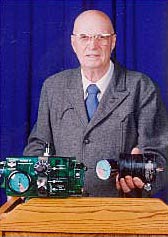
Figure 1. Dr F.M. Bird - Photo Dr Bird.
Dr. Forrest Morton Bird was born on 9 June 1921 in Stoughton, Massachusetts, USA. Bird grew up in a family of pioneers of aviation - his father was sent to France with the American Expeditionary Forces as a pilot during the First World War. In 1935, at the age of 14 years, Bird made his first solo flight in a Waco biplane. In turn, during the Second World War, Bird was sent to Europe as a pilot and was assigned to a mission critical during this conflict. Dr Bird is part of the American crew responsible for bombing German troops in Dunkirk. Back from mission, he complains that he was not being able to fly higher to avoid the firing batteries on the ground. Bird has just participated to the disembarkation without knowing it.
During one of his missions of delivery B-17 to Europe, Bird was ordered to return to the United States for study a German Junkers JU-88 captured by the RAF. This mission will have a significant impact on the future of Dr. Bird. Indeed, this German plane was equipped with a system of oxygen for the crew during flight at high altitudes. The U.S. planes still use free oxygen in a facial mask. The American airmen are indeed limited and cannot fly at an altitude of 28 000 feet because of the inability of their systems oxygen to maintain arterial saturation at the highest altitudes. While at the same time, the Army of U.S is equipped with aircraft designed for mounting at altitudes superior to 30 000 feet.
After studying the German system, Bird discovered that the problem coming from the "labor breathing" excessive of that regulator during spontaneous breathing to furnish oxygen. Bird decided to design a new regulator. With the help of his "flight surgeon" Bird develops a respiratory system of pressure using improved gas masks used in mines (Fig. 2). If the system works, aviators can fly above 30 000 feet easily and not have the difficulties by Bird in Dunkirk.
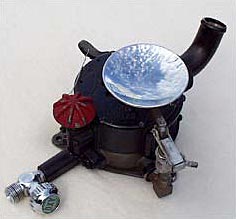
Figure 2. First respiratory system of pressure
developped by Dr F.M. Bird - Photo Dr Bird.
To test and validate this invention, Bird decided to conduct a flight test. At the altitude of 10 000 feet, aviators have to write their name on a paper, then they did the same operation successively to each new level of 5000 feet. Bird said: “If we are hypoxic, our writing will become less and less readable”. They go up to 35 000 feet and their writing remain perfectly legible, something which proves they are not hypoxic. This is an important innovation, but that make this discovery?
The answer comes from Dr. Hulsey, former organic disease specialist who suggested to Bird to meet Dr B. Armstrong at the School of Aviation Medicine - USAAC. On a flight from San Antonio - United States, Bird arrive at the office of Armstrong to present his prototype. Armstrong calls several advisers, including two outstanding doctors, Dr. AF Cournand (Fig. 3) and Dr. Barach. Nobel Prize in French medicine in 1956 for his discoveries on cardiac catheterization with Dr. W. Forssmann and DW Richards, Cournand suggests to Bird study medicine as he did by offering him one of his writing nammed "God's engineering in the body". But Bird is a Flyboy and it will probably remain in the Army, then go home and at Eastern Airlines!
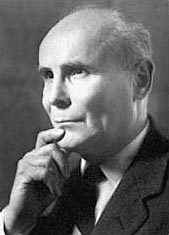
Figure 3. Dr André Frédéric Cournand (Paris, 1895 - 1988)
Columbia University Division CardioPulmonary Laboratory,
Bellevue Hospital New York, NY, USA.
In 1941, Bird is working on "Anti-G Suit" (Fig. 4) - Anti-g combination.

Figure 4. « Anti-G Suit », Bird Museum,
Sandpoint, Idaho, USA - Photo J.L. Godet
During a test of his suit "Anti-G suit” on a centrifuge, Bird was injured. During accelerating, the seat does not work and produce a very high pressure by negative "g", on cerebral circulation. Bird suffers from ocular haemorrhaging which cause a decline in visual acuity. On this occasion, Bird loses its status of pilot, for a long period. Next to this accident, Bird decided to follow the advice of Cournand and undertake medical studies.
In the late 1940s, the father of a friend "COPD advanced" - chronic obstructive pulmonary disease - Bird adapts its regulatory development for aviators in a respirator device in aid to human being. This device allows the manual removal of a positive pressure through an aerosol Devilbiss No. 40 producing and promoting a better penetration of air into the lungs (Fig. 6).

Figure 6. 1950 - Dr Bird's first prototype with
manual positive pressure selection - Photo Dr Bird.
During his studies, Bird creates a second prototype that gives to Barrach to evaluate its clinical efficacy and compare it to the nebulization.
During medical school, Bird met Dr. Robert Dripps, an anesthesiologist at the University of Pennsylvania, who brings together a group of particular clinicians and researchers all focused on mathematics and physics. Dripps presents Julius Comroe, with whom he immediately has many common interests. At that time, Comroe and many of his colleagues are immersed in the drafting of a manual providing a method for presenting to the physicians “clinical pulmonary physiology” and “the methodology for measuring lung function”. Bird is fascinated by this method of presenting Comroe, he will use it, later, for his own presentations.
The book of Comroe “The Lung” has become the most famous introduction to clinical pulmonary evaluation. His form of teaching cardiopulmonary physiology for doctors, using mathematics and physics in an understandable manner, is leading to the acceptance of his classic presentations by the greatest number of doctors. With great knowledge of cardiopulmonary physiology, Bird is interested in the pathophysiology of cardiopulmonary diseases. Fortunately, Bird was presented to Dr. Hisman of the University of Sandford, who was very involved in the achievements and publications of a book called Diseases of the Chest. This book becomes the main source of various cardiopulmonary diseases where Bird draws its knowledge. Cournand uses the first prototype of Bird with patients dependent on the iron lung requiring continuous mechanical ventilation. This great experience realized at the “Belleview Hospital” in New York allows the functional and clinical evolution of its magnetic respirators, which authorizes the development of controlled mechanical ventilators for intensive care patients. In parallel of Cournand studies, and because of his introductions to the “Wilford Hall USAF Hospital”, Bird employs the prototype of ventilator to achieve animal studies in order to test the adaptability of its machines for a wider use in patients.
Since 1957, following clinical studies, the respirator magnetic control underwent seven stages of major development and becomes the “Bird Mark 7” (Fig. 7 and 8). Later, Bird finally designs a respirator to be used by thousands of patients to the world. Thus, since 1957, Bird introduced the first reliable respirator manufactured in series: the "Mark Bird". It is through the wide sphere of Cournand’s influence that Bird began to make himself known by all of the most known personalities in the cardiopulmonary. These contacts are used to evaluate the respirator “Bird Mark 7” as part of medical programs. Most of the early masters of Bird are internists, orientated to cardiopulmonary medicine. Anesthesia quickly takes a large place in his experimentation. From his prolonged experiences Bird always said that the “textbook knowledge” of anesthesia with ball remains the symbol of all modes of mechanical ventilation lungs. Following the rapid use of respirator “Bird Mark 7” in the world, it publishes a number of reference manuals oriented to the clinic of “therapeutic mechanical ventilation”. One of the first published texts by anesthetists, pioneers of therapeutic ventilation, is the Respiratory Care of Peter Safar.
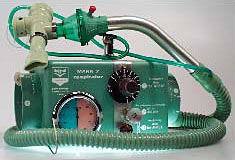
Figure 7. The Bird Mark 7 - Photo Dr Bird.

Figure 8. The Bird Mark 7 diagram by Dr Bird.
During clinical studies of its ventilator, Bird was honored by Dr. Penfield Institute of Neurological Mac Gill University, who enabled him, by ventilating its neurosurgical patients to acquire another large clinical experience. During his studies with Penfield, Bird spends considerable time with Dr Bates and Christie who are in the process of writing a book concerning the Respiratory Function in Disease, which is a reference in cardiopulmonary medicine.
Before the Vietnam War began, Bird creates a universal medical respirator, the “Bird Mark 10” which can be found in most hospitals around the world. During the Vietnam War (1964-1973), Bird begins the evacuations by helicopter, fitted with equipment for intensive care of transport, using the respirators created by himself i.e., Mark 14 and Mark 17. Thus, we no longer use of vehicles of transport but just the medicalized transportable beds, which allow to stabilize patients during aerial evacuations. That's when the Mark 4 “Anesthesia Assistor Controlor” is, in turn, inserted into the operating rooms.
In 1960, Bird founded the “Bird Institute of Biomedical Technology” with rooms for lessons in the complex of the “Bird Corporation” at the airport in Palm Springs - California - United States. The program of studies is targeted for doctors involved in the care of patients with cardiac insufficiency serious or chronic. The unit is headed by John Raaphorst. At that time, there is no treatise on the therapy pharmacological and mechanical concerning the cardiopulmonary. Initially, Bird develops educational supports in the line of classical medicine where exists a large consensus.
As noted, the work of Dr. Bird is partly motivated by a personal factor. After the Second World War, he is married. His wife Mary has a triplet suffering from deficiency of Alpha-1 antitrypsin and the two others die relatively early of this disease. To help Mary, Dr. Bird designs and develops the “intrapulmonary percussion”, with this apparatus Mary Bird lived, beyond all expectations, till 1986. In 1972, Bird sells “Bird Corporation” and moved to Sandpoint - Idaho in the Northwest of the United States to devote to his fourth generation of respirators cardiopulmonary (Fig. 10).

Figure 10. Percussionaire Corporation Sagle
Sandpoint Idaho - Photo Monique Vienne.
In the late 1970 early 1980, Bird conceives “intrapulmonary percussive ventilation – IPV”, a concept that allows the administration of internal percussions of high frequency in the structures of lung. The IPV is a concept of ventilation of high frequency taken on the circuit respiratory open of the Phasitron used today in the neonatal intensive care unit, pediatric and adult, as well as in centers of big burned, but also in services of pneumology or re-education and rehabilitation functional. The IPV is a method of treatment and ventilation transitory of restrictive respiratory disorders and / or several obstructive and / or chronic. The IPV allows administration of W Percussion i.e., a push air flow of gas in the airway of the patient, while also delivering in the patient an aerosol at high speed regardless of the respiratory phase. These percussions are small volumes of air, called “Volumes in common”, administrated at pressure and at frequencies adjustable, both in inspiration and expiration of the patient, and can be superimposed on the spontaneous or controlled ventilation. This method can also be applied to patients without spontaneous or controlled ventilation, as well as patients without spontaneous ventilation. The percussions replaces the ventilation of these patients, that is why we talk about transitory ventilation during the phase of Bronchopulmonary drainage treatment. These percussion are issued to the patient via circuit open permanently called Phasitron (Fig. 11). Phasitron and pneumatic generator (flow switch) are the key elements of the IPV (Fig. 12).
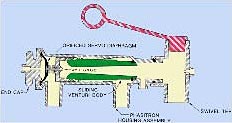
Figure 11. Section of the Phasitron - Diagram Dr Bird.
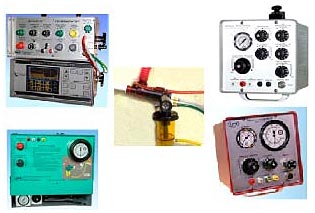
Figure 12. IPV generation - Photos Dr Bird.
The operation of Phasitron based on the effect of the principles of Bernoulli and Venturi - references to the work of Professor Bougatef. For each particle of gas injected in the Phasitron, the “Venturi Mobile”, allows for training up to five gas particles from the nebulizer. Similarly, an increase in pressure upstream of Phasitron at the level of aerial voice of the patient, is reflected in the “Venturi Mobile” and creates a reduction of up to the cancellation of his training. In this way, the volume of gas delivered to the patient will depend on changes in resistance of his/her airways. Thus, when resistance is high, small volumes are delivered at a higher pressure or conversely, in the presence of low resistance of larger volumes will be delivered, but at low pressure. This protects the lungs of the patient from the risk of barotrauma and / or volotraumatisme. The “Venturi Mobile” can make round trips between the position of inspiratory and expiratory at a frequency ranging from 80 to 350 cycles per minute for the IPV, and more than 900 cycles per minute for the VDR-4. Thus the loop is closed. The Phasitron is a summary of the “Bird Mark 7” into its development, Bird has displaced the Venturi from its distal position of “Bird Mark 7” to a proximal position closer to the patient in the IPV. The Phasitron has its aerosol resulting from all the work done before. The open circuit of the Phasitron reduces the risk of excess air in the voice.
And this whatever:
- age - from newborn to seniors
- the state - acute or chronic
- malnourished or obese – and
- the state of consciousness of the patient - working or not, sedated, prolonged coma, or those with multiple pathologies evolving.
This concept reduces the death rate of over 60% at a rate of between 15 and 10% of patients most severely burned presenting injuries of chemical inhalation. In addition, through its innovative technology, the IPV continues to save patients of intensive care around the world. The generation “Percussionaire” not only can allow to save lives, but also improve the quality of life of thousands of patients with advanced cardiopulmonary disease at home.
In 1995, Bird was admitted to the “U.S. Inventors Hall of Fame” thanks to the development in the “fluid dynamics” who uses in all of his medical respirators cardiopulmonary.
He tabled and received many international patents on “Fluid Control Device; Respirator; Pediatric Ventilator Respirator / Ventilator”. He was also the chairman of the “Civil Aviation Medical Association” - CAMA for many years.
Dr. Bird is a developer of aeromedical technologies. With dual competence of doctor and physicist, he developed and implemented his concepts based on a clinical and physical approach. At the clinic level, the respirator “Bird Mark 7” is the starting point for a range of original equipment mechanical and pneumatic ventilation. Dr. Bird has always the same system of pneumatic logic based on the fact that the circulatory systems of mammals are similar. He tracks the major advances in cardiopulmonary medicine. His machines incorporating new technological advances - the generation “Percussionaire” - continue to save thousands of patients in intensive care around the world. The “Percussionaire” generation not only can save lives, but can improve the quality of life of thousands of patients with advanced cardiopulmonary disease at home.
Dr. Bird is now 87 years old and still flies his planes, he continues to invent, create and teach around the world. Dr Bird said: “I had fun doing it. When I look back my life, I realize that without my aviation skills, I could not excel in my various searches. Time spent on aviation projects has been rewarded by the success of my medical projects. This will be a very sad when I cease to fly but I know I will not cease to invent”
Paris, le 11 mai 2009
Traduction français-anglais : Irini Giannopulu, Dr. en Neuropsychologie de l’Université Pierre et Marie Curie, enseignante et chercheur.